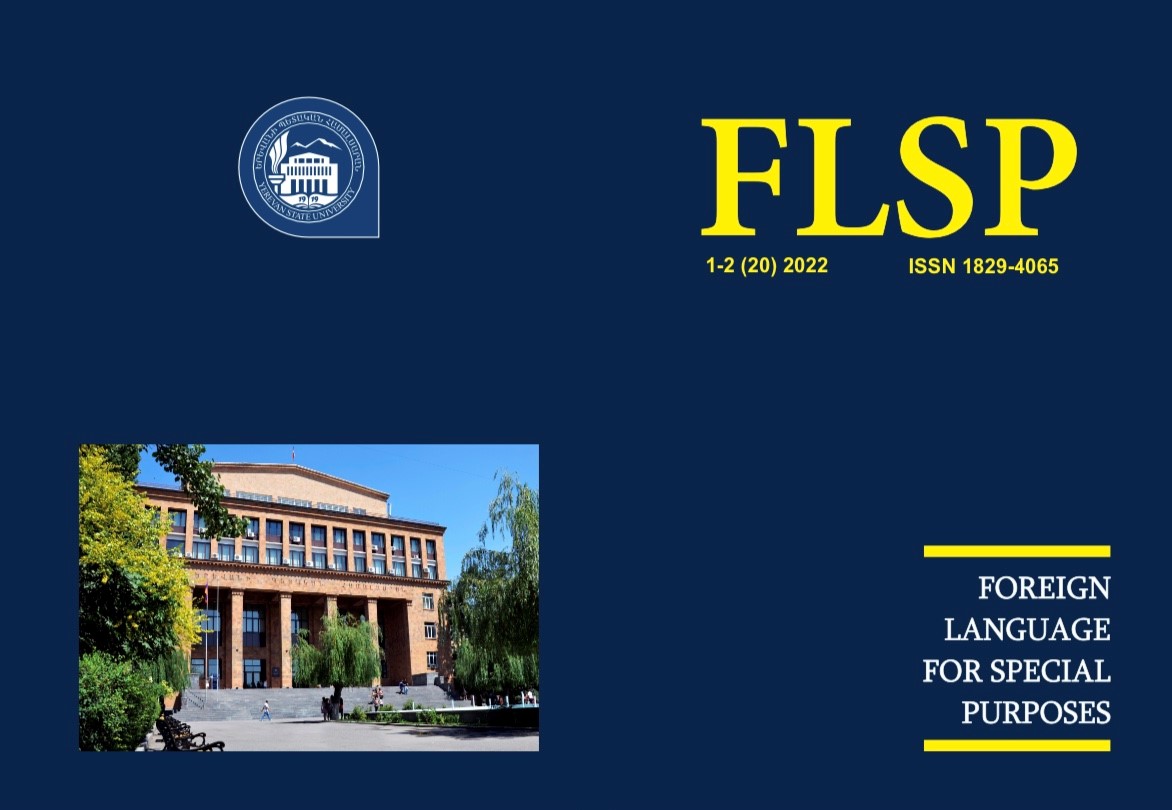ՔՆՆԱԴԱՏԱԿԱՆ ՄՏԱԾՈՂՈՒԹՅԱՆ ՀՄՏՈՒԹՅՈՒՆՆԵՐԸ ԻԲՐԵՎ ՄՏԱՎՈՐ ԳՈՐԾՈՂՈՒԹՅՈՒՆ ՀԱՄԱԼՍԱՐԱՆՈՒՄ ԱՆԳԼԵՐԵՆԻ ՈՒՍՈՒՑՄԱՆ ԺԱՄԱՆԱԿ
DOI:
https://doi.org/10.46991/flsp.v20i1-2.8959Keywords:
քննադատական մտածողություն, վերլուծական մտածողություն, Բլումի տաքսոնոմիան, ստեղծարարություն, աշխատավայր, առարկայական ծրագրեր, վերլուծել, գնահատել, համագործակցել, հաղորդակցություն, կրթությունAbstract
Քննադատորեն մտածելու կարողությունը կարևոր է եղել բոլոր ժամանակներում, սակայն այն առավել արդիական և անխուսափելի է 21-րդ դարում, երբ հարափոփոխ պայմանները պահանջում են նորարարական և ոչ ստանդարտ խնդիրներ լուծելու կարողություն։ .
Դասավանդման հիմնական նպատակներն են ստեղծագործական և քննադատական մտածողության ձևավորումը, տարբեր իրավիճակներում ստացված տեղեկությունը և գիտելիքները գործնականում կիրառելու կարողությունը:
Անկասկած ուսանողները պետք է ներգրավվեն հետազոտական և ստեղծագործական գործունեության մեջ, որպեսզի հասկանան, ստեղծեն, տիրապետեն նոր հմտություններին, արտահայտեն իրենց մտքերը, որոշումներ կայացնեն, կարողանան քննադատորեն գնահատել ինչ-որ երևույթի հուսալիությունը, ճշգրտությունը. այսինքն՝ ընդհանրապես քննադատաբար դիտարկեն ցանկացած իրավիճակին:
References
Atkinson D. (1997), A Critical Approach to Critical Thinking. TESOL Quarterly, 31 (1), 71-94.
Black S. (2005), Teaching Students to Think Critically. The Education Digest, 70(6),
p.
Bloom S. B. (1956), Taxonomy of Educational Objectives. Handbook 1: Cognitive Domain, 2nd edition. Addison-Wesley Longman Ltd., 206 p.
Bowerman M., Levinson, S.C. (2001). Introduction. In M. Bowerman and S. C. Levinson (eds.), Language Acquisition and Conceptual
Development,. Cambridge: Cambridge University Press, pp. 1-16.
Burge B. E. (2012), Starbird Michael, The 5 Elements of Effective Thinking. Princeton University Press, 157 p.
Cassel R. N, Kolstad R. (1998), The Critical Job-Skills Requirements for the 21st Century: Living and Working with People. Journal of Instructional Psychology, 151 p.
Cummins J. (1994). The Role of Primary Language Development in Promoting
Educational Success for Language Minority Students. In C. F. Leyba (Ed.), Schooling and language-minority students: A theoretical framework, 2nd ed., pp. 3- 46.
Duron R., Limbach, B., Waugh W. (2006). Critical Thinking Framework for any Discipline. International Journal of Teaching and Learning in
Higher Education, 17(2), pp. 160-166.
Facione P. A. (2000). California Critical Thinking Skills Test: Form 2000. Millbrae, CA: Insight Assessment.
Hanratty L. (2012), Great Debates – 24 of the Most Important Questions in Modern Society for Teachers of ESL and EAP. TEFL Ideas, 310 p.
Jackson D., Newberry P. (2015), Critical Thinking: A User’s Manual, 2nd edition. Wadsworth Publishing, 368 p.
Moore B. N., Parker R. (2008), Critical Thinking. McGraw-Hill Education, 11th edition, 512 p.
Northege A. (2005), Adult Learning. Pretoria: University of South Africa, 64 p.
Richard P., Linda E. (2008), The Miniature Guide to Critical Thinking Concepts and Tools, Foundation for Critical Thinking Press, 27 p.
Tapper J. (2004). Student Perceptions of How Critical Thinking is Embedded in a Degree Program, Higher Education Research and Development, 23/2, pp. 199-222.
Williams M., Burden R. L. (1997). Psychology for Language Teachers: A Social Constructivist Approach. UK: Cambridge University Press, 391 p.
Downloads
Published
Issue
Section
License
Copyright (c) 2022 ՕՏԱՐ ԼԵԶՈՒՆԵՐԸ ՄԱՍՆԱԳԻՏԱԿԱՆ ՆՊԱՏԱԿՆԵՐԻ ՀԱՄԱՐ

This work is licensed under a Creative Commons Attribution-NonCommercial 4.0 International License.
Creative Commons Attribution-Non-Commercial (CC BY-NC). CC BY-NC allows users to copy and distribute the article, provided this is not done for commercial purposes. The users may adapt – remix, transform, and build upon the material giving appropriate credit, providing a link to the license. The full details of the license are available at https://creativecommons.org/licenses/by-nc/4.0/

